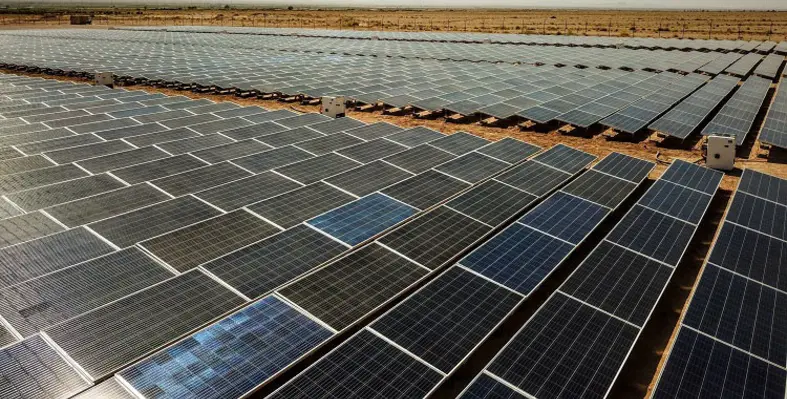According to the IEA’s Electricity 2024 report, global electricity demand is expected to increase by an average of 3.4% from 2024 to 2026 after easing to 2.2% in 2023
However, an expected blossoming of generation from low-emissions sources, with solar, wind, hydro and nuclear power leading the charge to meet this demand increase. As such, the IEA has projected this will reduce the role of fossil fuels in providing power for homes and businesses with low-emissions sources expected to account for almost half of the world’s electricity generation by 2026, up from a share of under 40% in 2026.
Notably, renewables will make up one-third of total electricity generation by early 2025 (overtaking coal in the process), nuclear power generation is forecast to reach an all-time high in the same year, and the share of fossil fuels will drop beneath 60%. The latter will mark the first time it has gone below this threshold in IEA records that date back more than five decades.
The result of these changes will see the power sector’s emissions go into structural decline, with global emissions from the industry expected to decrease by 2.4% in 2024, followed by smaller drops in the following two years.
“The power sector currently produces more CO2 emissions than any other in the world economy, so it’s encouraging that the rapid growth of renewables and a steady expansion of nuclear power are together on course to match all the increase in global electricity demand over the next three years,” remarked IEA executive director Fatih Birol. “This is largely thanks to the huge momentum behind renewables, with ever cheaper solar leading the way, and support from the important comeback of nuclear power, whose generation is set to reach a historic high by 2025. While more progress is needed, and fast, these are very promising trends.”
Africa: an energy outlier
According to the report, Africa remains an outlier in electricity demand trends with electricity use per capita in 2023 half that of India and 70% lower than southeast Asia (in 1990 average electricity consumption per person in Africa exceeded that of both regions).
This has been the result of three decades of electricity consumption stagnation as opposed to southeast Asia and India, both of which have witnessed a significant surge accompanied by rapid economic development.
The IEA report indicated that Africa’s per capita electricity consumption in Africa is estimated at 530kWh, while sub-Saharan Africa (excluding South Africa) averages around 190kWh. The organisation expects per capita electricity consumption on the continent to recover to its 2010-2015 levels by the end of 2026 at the earliest and between 2024-2026, there will be an average annual growth in total electricity demand of 4%. This will be double the mean growth rate observed over 2015-2023.
Around 60% of this growth in demand is expected to be met by expanding renewables, continuing its rise which has seen renewable generation grow on average by 5% between 2015-2023. Until 2026, the IEA forecasts an average of 10% growth in renewable generation as the deployment of renewables gathers pace.
Certainly, the growing emphasis can be seen in the various recent renewable projects and news that have emerged across the continent in recent months. Notable examples include a new rooftop solar system for Rider Steel’s Kumasi factory; Neosun’s entry into the South African market; Globeleq reaching financial close on its geothermal projects; and Voith’s announcement that it will be equipping the 2GW hydropower plant in Angola.
However, to retain this momentum and reach 10% renewable growth, the IEA has stated that energy investments will have to more than double from today's US$90bn by 2030.






